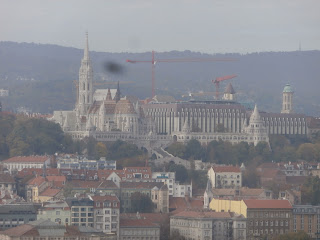Had I been really good at economic forecasting, I would have been much richer, worked less and probably had more time to indulge in hobbies, including blogging. Sadly, predicting economic variables is, needless to say, subject to a lot of uncertainty. Time permitting, I keep track of what is going on in the real economy and on financial markets and spot some sparkles of optimism.
Stock markets, which usually anticipate economic recoveries, have rebounded recently, with the Warsaw Stock Exchange broad market index being some 20% above its low from early October. Some pundits warn it is just a major correction in the bear market, yet upbeat sentiment has definitely taken over recently.
Natural gas and electricity prices on commodity exchanges, though still volatile, have fallen off peaks from September. With natural gas storage facilities across Europe full, the threat of a severe energy crisis has been somewhat staved off. This also gives relief to entrepreneurs from who energy is an important item in the cost structure, except for those who hedged purchases at peaks.
Commodity prices have also adjusted to lower demand, which means, the demand for them might not necessarily fall. Brent crude oil now costs (in USD) roughly as much as before Russia invaded Ukraine.
The last glimmer of hope are PPI (producer price inflation) readouts, which signify decreasing cost pressure for entrepreneurs, which will with a delay of a few months should translate into lower consumer inflation.
Not all signals from the economy are bright. Profits of companies after 3Q2022 keep falling dramatically, which might hamper their investment plans and necessitate lay-offs.
Consumer confidence in Poland is also record-low, with wallets of ordinary people badly hit by prices of most basic goods rising faster than general inflation (+17.9% in October 2022). With negative real average wage growth (around -4% y/y) the discretionary spending must plummet and so far nothing indicates private consumption could recover soon.
Across Europe a big unknown is the threat of energy shortages during the winter. I lack competencies to assess how real that threat is, but if only the most energy-consuming industries are forced to suspend productions, effects of negative supply shock will spill over the entire economy, send inflation up.
In Poland much depends on the influx of refugees from Ukraine, where the Russian tyrant is trying to destroy the infrastructure to deprive civilians of electricity, heat and water during the winter.
Even if the worst has not come over, I believe it is a matter of a few months. Roll on spring!








